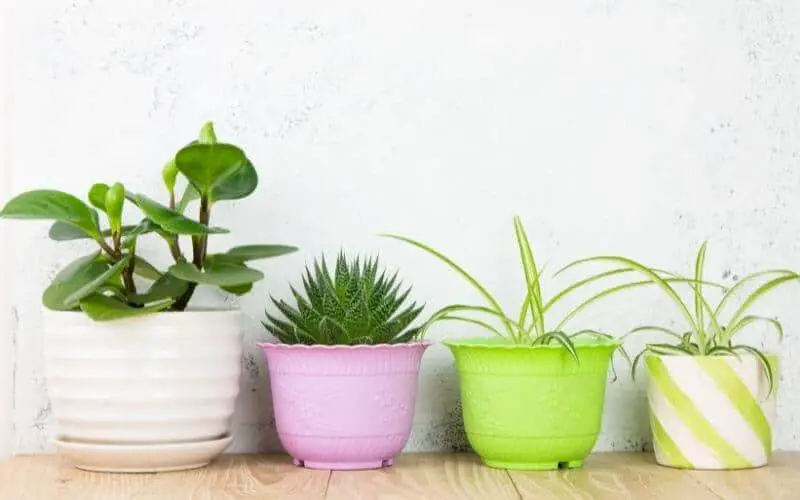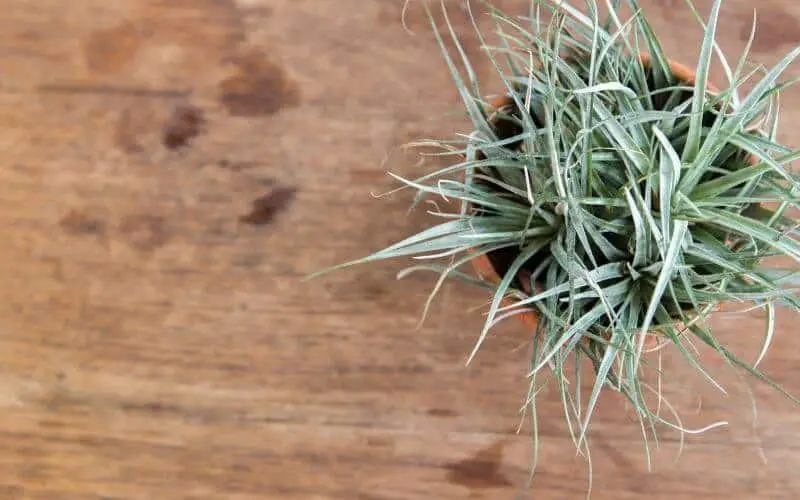Having to deal with scratches, tears, and wears left on your floors by dragging plant pots halfway across your brand new wooden floor doesn’t look too good.
Keeping plants on your wood floor indoors is great, but these wear and tears leave a terrible impression on your floor surface.
Typically, a great way on how to protect your floors from potted plants is by placing rugs or trays underneath the plant pot to prevent direct contact with the floor.
Also avoid overwatering the potted plans as this can cause an overflow which could eventually leave stain or damage your floor.
A good way to avoid scratch from these potted plant is by purchasing rubber-wheeled dolly or soft felt furniture slides to transport plant pots.
Read: How to protect floor from chair legs
How to Protect Floor from Potted Plants
Table of Contents
Do Not Overwater Potted Plants
Before watering plants, be sure to place trays underneath the pots in case of an overflow.
Overflowing water from potted plants could leave stains and, much worse, if your floor option is porous, it could lead to trapped in moisture.
Moisture can wear out floor options, especially if you have an expensive natural stone travertine tile.
A basic rule of thumb will be to apply a smaller amount of water to the pots and then check through for overflows before adding more.
Read: How to clean travertine floors
Dragging Will Leave Scars and Tears on your Floor
Plant pots are mostly made of plastics, stones, irons, and even biodegradable materials. These pots could easily leave scratches and tears if dragged across your floors.
To protect your floor from plant pots, avoid dragging them across floor planes. And if completely necessary, use a rubber-wheeled dolly to move heavy plants across floors if you want to clean that area.
Read: How to move furniture without scratching floor
Prevent Direct Contact With Floors
You don’t have to drag pots across your floor to leave scratches on them; just placing plant pots on bare floors could do just enough harm.
Another easy hack to protect your floors from potted plants is to cover the floor on which the pots are kept with rugs, trays, trivets or stands. This prevents the pots from having direct contact with your floors.
Read: Do rug pads damage wood floors?
Double-Check if Potted Plants are Secure
While trying to protect your floors from drag, tears, and wears, you should also try to protect them from pets, kids, and wind action.
Placing plant pots close to places more accessible by wind could easily push down potted plants. A direct hit from a decent height is just enough to cause severe harm to your floors.
Also, pets and kids could easily push down on plant pots which will wreck your expensive floor.
If you must protect your floor, then employing the proper methods to secure plant pots should be your priority.
How to Protect Carpet From Indoor Plants
Carpet marks, discoloration, mold growth, offensive odors, and holes don’t make the best impression, do they?
We know how it feels when everything doesn’t just sit right after you have just finished cleaning and setting up your house, only for it to be spoiled by a carpet patch or hole.
Expensive rugs won’t look nice if ravaged by indoor plant pot patches or mold growth. That’s why this guide will take you through amazing tips on how to protect carpet from indoor plants.
Read: Carpet smells like urine, quick fix
Avoid Pouring in too much Water
Plants require just enough water when kept indoors, but overdoing this could cause damage to your carpets. Having excess water drip on your rugs will lead to stiffness, dye bleed, mold growth, and offensive odors.
You can avoid excess water drips by limiting water quantity or simply placing ice cubes into plant pots instead of liquid water. This lets it gently sip into the soil without overflowing.
Also, if using plant pots with holes in the bottom, always place them in a tray so excess water can sip in rather than on your expensive rug.
Read: Does water stain carpet?
Hang Plant Pots to Avoid Pot Marks
Carpets are made of delicate materials like olefin, polyester, woven nylon, wool fibers, etc. As such, placing indoor plant pots directly on your rugs will leave pot marks, and you wouldn’t want that would you? Certainly not, not on an expensive carpet!
That is why we recommend purchasing plant pots with ropes that can easily be hung, so you can place them on a hook, and you don’t ever have to worry about pot marks ravaging your carpets.
Read: How to get scuff mark off floor
Thoroughly Inspect the Plant
To avoid bringing in plant pests like carpet beetle, a basic rule of thumb will be to thoroughly inspect plants before bringing them inside.
Carpet beetles are easily attracted to plant nectar and pollen and, as such, could easily follow your plants inside. When inside, they can be very destructive to your carpets, especially if they are made from natural fabrics.
Use Plastic Pots and Other Pot Materials Instead of Ceramics.
Is your plant placed where it is easily accessible by kids or pets? Then it would be best if you had plastic or unbreakable pots instead of ceramic plant pots.
Ceramic pots will easily break when ran through or disturbed hence, spilling soil into your carpets. Invest more in plastic and other unbreakable pots to avoid this from happening.
Floor Protectors Will You Save You A Lot
Potted plants will always wreck your expensive rugs as they can’t do without water; this may lead to moisture sipping through to your carpets. In cases like this, we recommend high-grade floor protectors.
Floor protectors are made of polyester, which absorbs moisture from potted plants. Also, they reduce tears on your rugs.
Read: How to tackle water spill on floor
Grow Plants That Don’t Require soil
Are you getting tired of having to deal with tipped soil on your carpets? We recommend you try plants that don’t require soil.
Some plants will thrive in just a jar of water; plants like lucky bamboo, philodendron, Spanish moss do not require soil to grow. This completely eliminates the soil mess on your carpets.
Read: How to get mud out of carpet
Conclusion
Overall, for your floor and carpets to stay beautiful and ever radiant. the above tips on how to protect floor from potted plants has got you covered and thereby keep destruction at its minimum.
In order to prevent marks, discoloration, mold growth, and offensive odors on your area rugs, mat, and carpet flooring, then ensure to follow the laid out steps on how to protect floor from potted plants.
While ceramic can be a beautiful pot for your floor, it doesn’t really work well in cases with kids or pet at home. If you do have pets or kids at home then it is best to opt for plastic pots.

